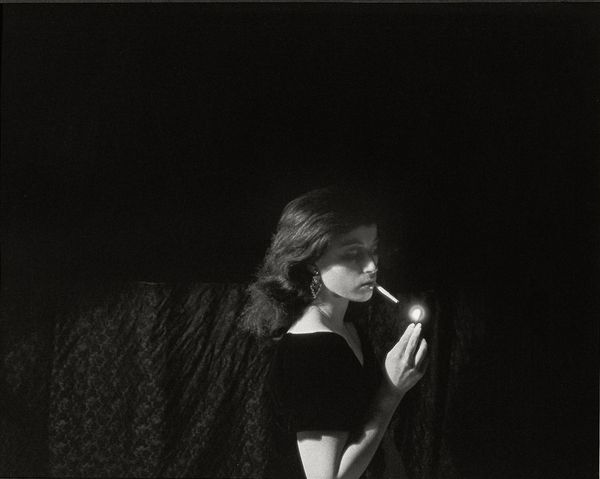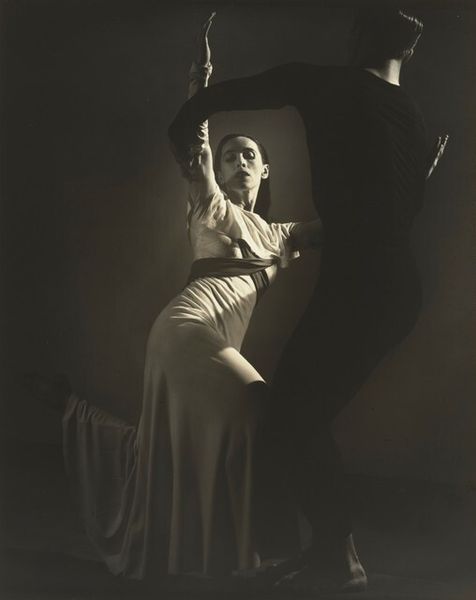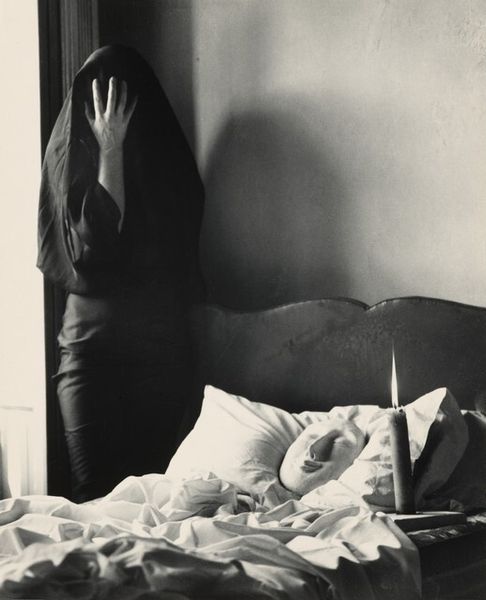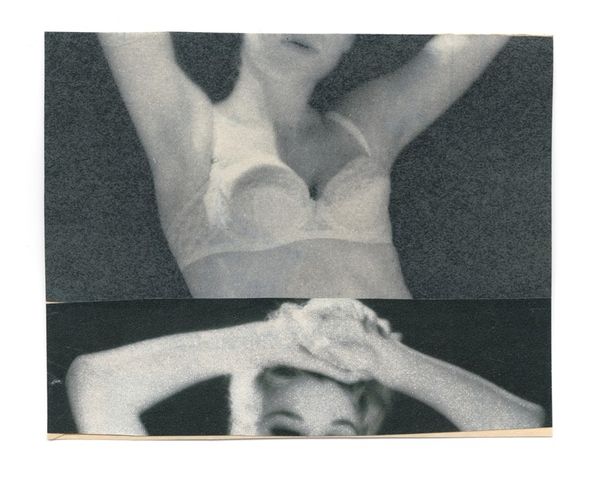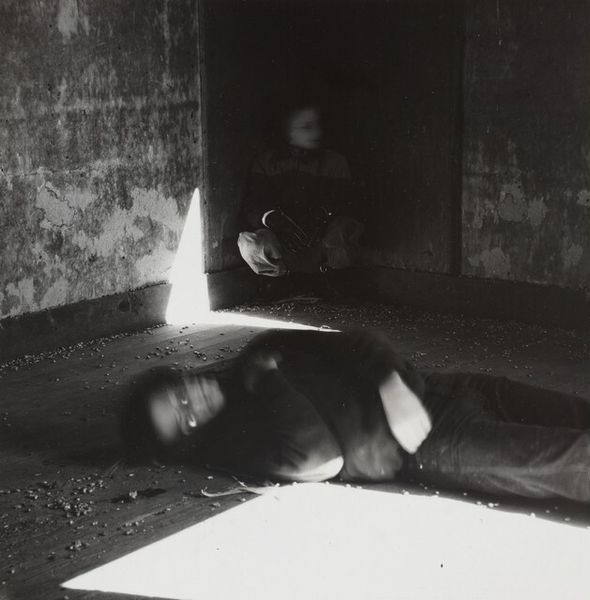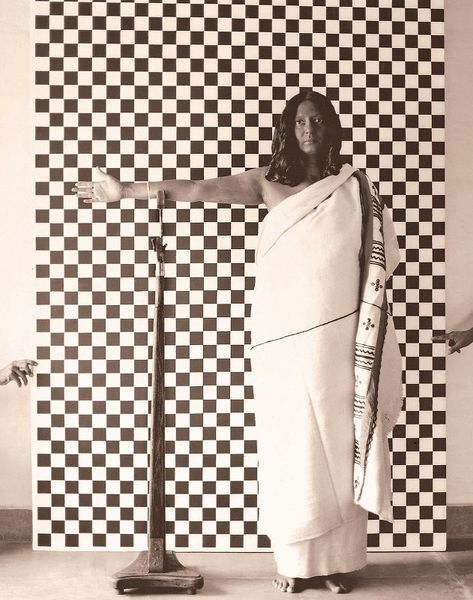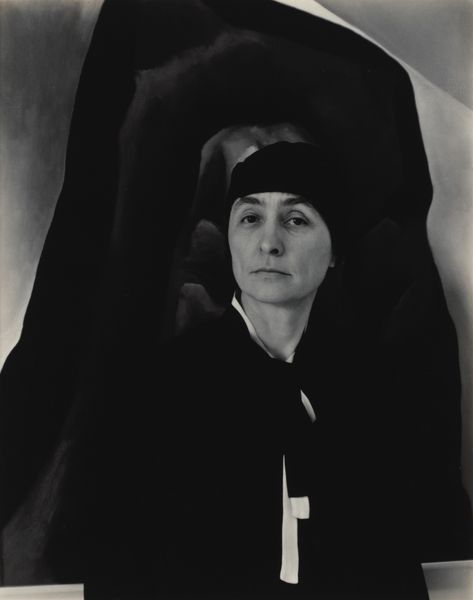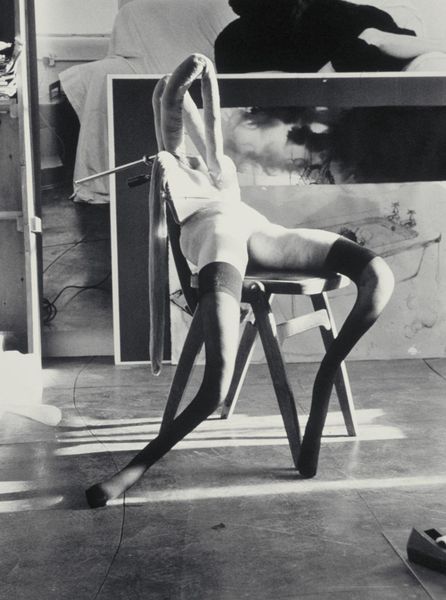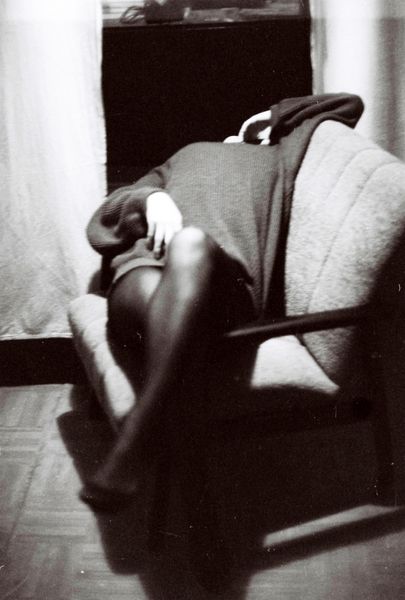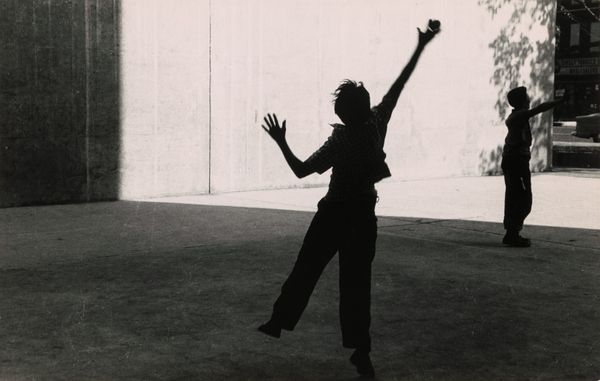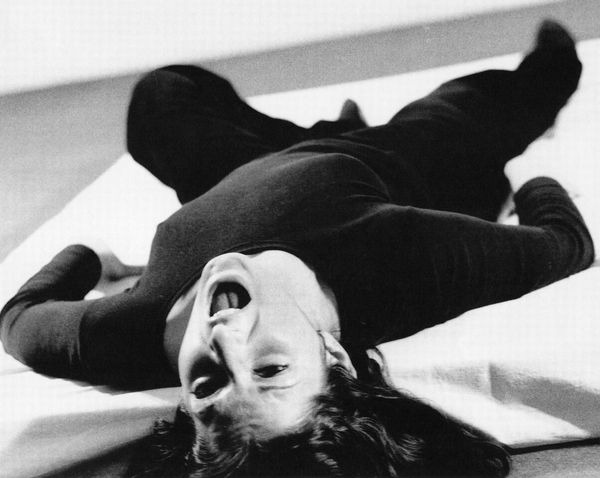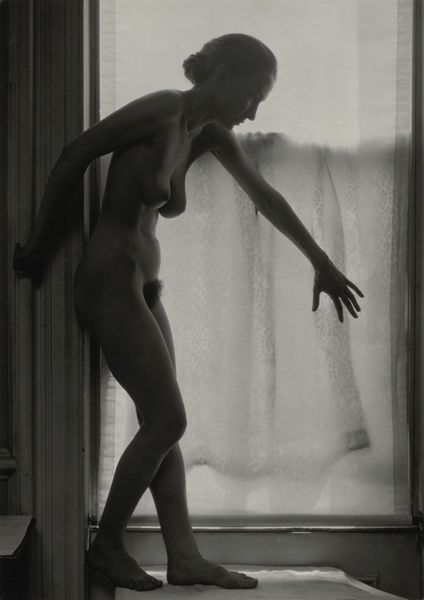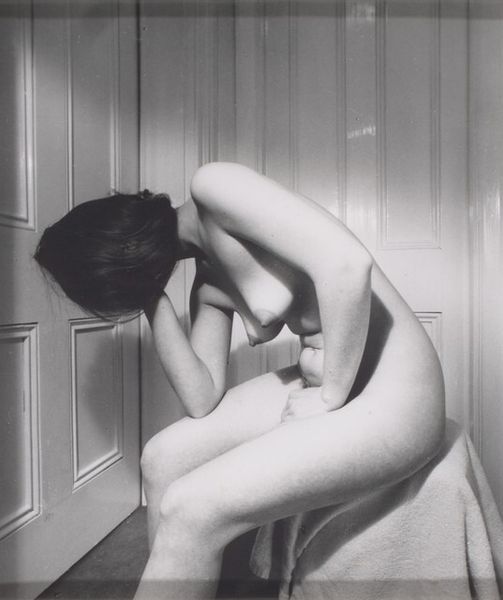
Dimensions: image/sheet: 22.23 × 28.26 cm (8 3/4 × 11 1/8 in.) mount: 34.93 × 41.91 cm (13 3/4 × 16 1/2 in.)
Copyright: National Gallery of Art: CC0 1.0
Curator: Looking at this gelatin-silver print by Ilse Bing, dating back to 1933, titled "Ballet 'L'Errante', Paris", I immediately sense a feeling of dramatic solitude. The lone figure kneeling, juxtaposed against the standing, cloaked one in the background… it's quite evocative. Editor: Yes, the material contrast jumps out. That velvety darkness of the kneeling figure’s costume, rendered so richly by the gelatin-silver process, plays against the stark white backdrop and the ghostly figure standing further off. Do we know the context of the original performance itself? Curator: "L'Errante" explores themes of exile and wandering, central to Bing's personal history. This image speaks to the cultural anxiety of the pre-war era, mirroring a collective sense of displacement through its stark staging and emotive poses. Editor: I’m curious about the staging itself. Note the calculated use of minimal materials here. Plain backdrop, simple costumes. There is an active choice being made to evoke a feeling via this reduction. Where did Bing situate herself to document these moments? Was this taken from within the audience, or was she working intimately backstage? The image production surely influenced the viewing public’s consumption of it. Curator: Absolutely. The image evokes both vulnerability and resilience, speaking to archetypal journeys. The figure's posture seems to suggest supplication but also conveys strength in her grounded presence, perhaps indicating a forced adaptation, an embracing of her displaced existence. Editor: It’s a fascinating interplay of public spectacle and personal feeling, captured and translated into a new commodity through the lens and darkroom processes of Bing’s photographic work. It’s not merely a record, but a creation in itself, layered with intent in its material choices. Curator: The recurring symbol of the wanderer transcends its specific moment, continuing to resonate with those experiencing societal and emotional uncertainty. It speaks to the enduring need for adaptation and the search for belonging that threads through history. Editor: Right, and considering the material conditions under which Bing was working, in Weimar Germany turned pre-war Paris, her own movements are inextricably tied into this staged movement that she immortalizes into a gelatin-silver print. Curator: It encourages one to contemplate our individual narratives within the broader context of societal currents, reminding us of the weight and meaning embedded in transient experiences. Editor: Precisely, the art exists because of those specific social and material conditions.
Comments
No comments
Be the first to comment and join the conversation on the ultimate creative platform.
